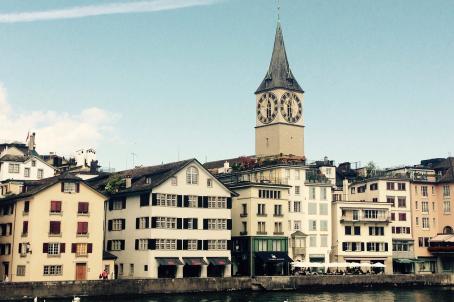Predigerkirche
The Predigerkirche was a church founded, together with a convent, in Zurich by the Dominicans in the 13th century. With the Protestant Reformation, it was transformed into a Protestant place of worship. From 1606 to 1614, the nave was fitted with Baroque elements. In 1887, the monastery building was destroyed by fire and the Zentralbibliothek was built in its place in 1915. In 1900, the church was endowed with the highest tower in the city, measuring 97 metres, designed by G. Gull and clearly inspired by the collapsed Grossmünster Towers.






